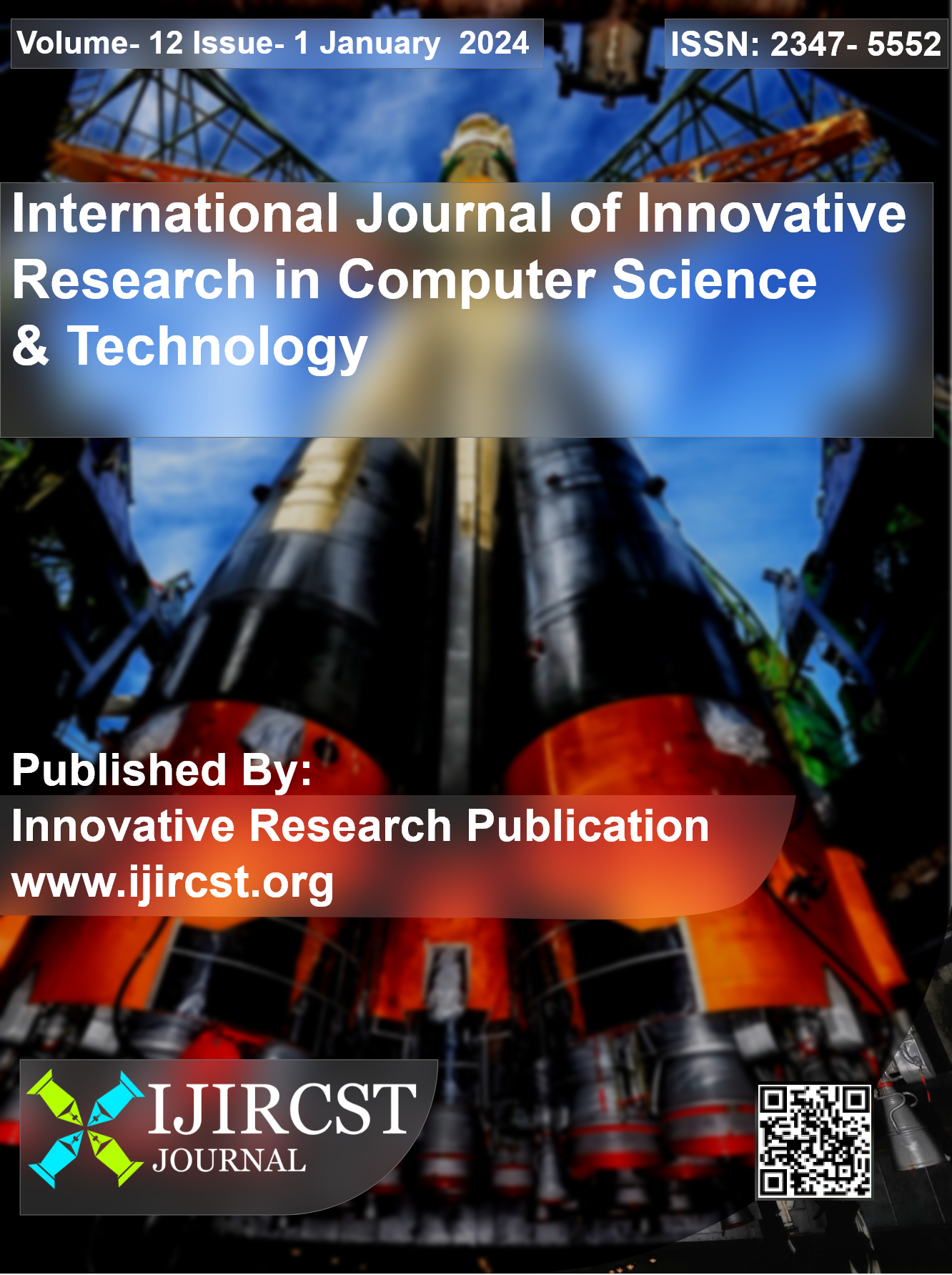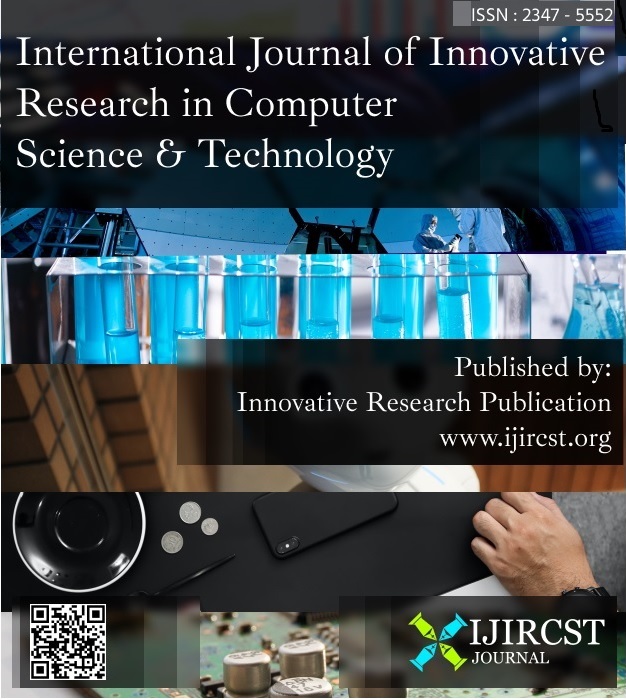Deep Learning Framework for Forecasting Diabetic Retinopathy: An Innovative Approach
Keywords:
Deep Learning, Retinopathy, Diabetic RetinopathyAbstract
In the realm of diabetic retinopathy, extensive research has been conducted by numerous scholars, who have explored and implemented a variety of machine learning techniques, contributing significantly to both healthcare and data science domains. With the increasing availability of deep learning procedures, packages, and libraries, these advancements have become pivotal in enhancing model performance. Consequently, this study embraces a novel methodology and platform in contrast to existing approaches to diabetic retinopathy, taking into account the outcomes and discoveries. For the deep learning model, the researcher leveraged the GPU provided by Google Colab. The dataset was sourced from a Kaggle competition hosted on the Kaggle website. Subsequently, the image data was stored in the researcher's personal server memory, and the URLs for each image were documented in an Excel sheet.
References
Khambra, G., & Shukla, P. (2021). Novel machine learning applications on fly ash based concrete: an overview. Materials Today Proceedings.
Shukla, P. K., Sandhu, J. K., Ahirwar, A., Ghai, D., Maheshwary, P., & Shukla, P. K. (2021). Multiobjective genetic algorithm and convolutional neural network based COVID-19 identification in chest X-ray images. Mathematical Problems in Engineering, 2021, Article ID 7804540.
Rathore, N. K., Jain, N. K., Shukla, P. K., Rawat, U. S., & Dubey, R. (2021). Image forgery detection using singular value decomposition with some attacks. National Academy Science Letters, 44, 331–338.
Agrawal, M., Khan, A. U., & Shukla, P. K. (2019). Stock price prediction using technical indicators: a predictive model using optimal deep learning. International Journal of Recent Technology and Engineering (IJRTE), 8(2), 2297–2305.
Bukhari, M. M., Alkhamees, B. F., Hussain, S., Gumaei, A., Assiri, A., & Ullah, S. S. (2021). An improved artificial neural network model for effective diabetes prediction. Complexity, 2021, Article ID 5525271.
Maniruzzaman, Md., Rahman, Md. J., Ahammed, B., & Abedin, Md. M. (2020). Classification and Prediction of Diabetes Disease Using Machine Learning Paradigm. Health Information Science and Systems, 8.
Ahmed, M. H., Elghandour, M. M. Y., Salem, A. Z. M., et al. (2015). Influence of Trichoderma reesei or Saccharomyces cerevisiae on performance, ruminal fermentation, carcass characteristics and blood biochemistry of lambs fed Atriplex nummularia and Acacia saligna mixture. Livestock Science, 180, 90–97.
Daliri, M. R. (2012). Automatic diagnosis of neuro-degenerative diseases using gait dynamics. Measurement, 45(7), 1729–1734.
Dwivedi, K. (2019). Analysis of decision tree for diabetes prediction. International Journal of Engineering and Technical Research, 9.
Polat, K., & Güne?, S. (2007). An expert system approach based on principal component analysis and adaptive neuro-fuzzy inference system to diagnosis of diabetes disease. Digital Signal Processing, 17(4), 702–710.
Liu, C., Zoph, B., Neumann, M., et al. (2018). Progressive neural architecture search. In European Conference on Computer Vision (ECCV), pp. 19–34, LNCS Springer, Munich, Germany.
Anouncia, M., Lj, C. M., Jeevitha, P., & Nandhini, R. T. (2013). Design of a diabetic diagnosis system using rough sets. Cybernetics and Information Technologies, 13(3), 124–139.
Valdez, P. J., Tocco, V. J., & Savage, P. E. (2014). A general kinetic model for the hydrothermal liquefaction of microalgae. Bioresource Technology, 163, 123–127.
Muthukaruppan, S., & Er, M. J. (2012). A hybrid particle swarm optimization based fuzzy expert system for the diagnosis of coronary artery disease. Expert Systems with Applications, 39(14), Article ID 11657.
Ganji, M. F., & Abadeh, M. S. (2011). A fuzzy classification system based on Ant Colony Optimization for diabetes disease diagnosis. Expert Systems with Applications, 38(12), Article ID 14650.
Ozcift, A., & Gulten, A. (2011). Classifier ensemble construction with rotation forest to improve medical diagnosis performance of machine learning algorithms. Computer Methods and Programs in Biomedicine, 104(3), 443–451.
Zou, Q., Qu, K., Luo, Y., & Yin, D. (2018). Predicting diabetes mellitus with machine learning techniques. Frontiers in Genetics, 9.
Wang, W., Meng, T., & YU, M. (2020). Blood glucose prediction with VMD and LSTM optimized by improved particle swarm optimization. IEEE Access, 8, 217908–217916.
Hasan, M. K., Alam, M. A., Das, D., Hossain, E., & Hasan, M. (2020). Diabetes prediction using ensembling of different machine learning classifiers. IEEE Access, 8.
Kapoor, S., & Priya, K. (2018). Optimizing hyper parameters for improved diabetes prediction. International Research Journal of Engineering and Technology, 5.
Srivastava, S., Sharma, L., Sharma, V., & Kumar, A. (2020). Prediction of diabetes using artificial neural network approach. In Engineering Vibration, Communication and Information Processing, 29, Springer, Berlin/Heidelberg, Germany.
Santhanam, T., & Padmavathi, M. S. (2015). Application of K-means and genetic algorithms for dimension reduction by integrating SVM for diabetes diagnosis. Procedia Computer Science, 47.
Nai-aruna, N., & Moungmaia, R. (2015). Comparison of classifiers for the risk of diabetes prediction. Procedia Computer Science, 69.
Mujumdara, A., & Vaidehi, V. (2019). Diabetes prediction using machine learning algorithms. Procedia Computer Science, 165.
Roy, V., Shukla, P. K., Gupta, A. K., Goel, V., Shukla, P. K., & Shukla, S. (2021). Taxonomy on EEG artifacts removal methods, issues, and healthcare applications. Journal of Organizational and End User Computing, 33(1), 19–46.
Roy, V., Shukla, S., Shukla, P. K., & Rawat, P. (2017). Gaussian elimination-based novel canonical correlation analysis method for EEG motion artifact removal. Journal of Healthcare Engineering, 2017, Article ID 9674712.
Gupta, R., & Shukla, P. K. (2015). Performance analysis of anti-phishing tools and study of classification data mining algorithms for a novel anti-phishing system. International Journal of Computer Network and Information Security (IJCNIS), 7(12), 70–77.
Kumar Ahirwar, M., Shukla, P. K., & Singhai, R. (2021). Cbo I E.: A Data Mining Approach for Healthcare IoT Dataset Using Chaotic Biogeography-Based Optimization and Information Entropy. Scientific Programming, 2021, Article ID 8715668.
Bhatt, R., Maheshwary, P., Shukla, P., Shukla, P., Shrivastava, M., & Changlani, S. (2020). Implementation of fruit fly optimization algorithm (FFOA) to escalate the attacking efficiency of node capture attack in wireless sensor networks (WSN). Computer Communications, 149, 134–145.
Ojesina, A. I., Lichtenstein, L., Freeman, S. S., et al. (2014). Landscape of genomic alterations in cervical carcinomas. Nature, 506(7488), 371–375.




